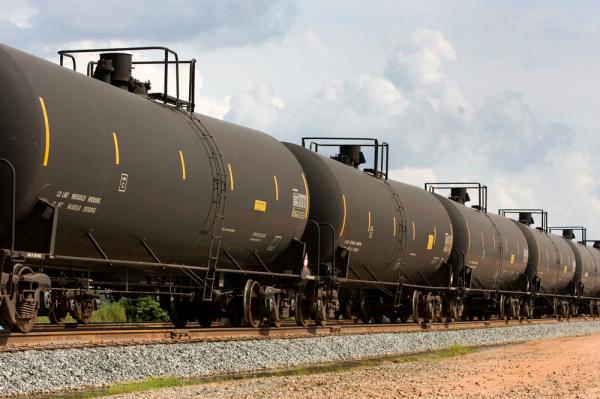
CALGARY, Alberta, Oct. 13 (UPI) — Oil transportation from the Canadian market remains dependent in part on rail transport because of insufficient pipeline capacity, a federal report said.
Canada last year was the fourth largest producer of oil and natural gas liquid in the world. Crude oil production in 2015 was 3.9 million barrels per day and most of that was shipped either to western provinces or to the United States through pipelines.
An annual report from the National Energy Board said export capacity is constricted because pipeline capacity hasn’t kept pace with production.
“Crude oil transportation by rail has been required to supplement pipelines in moving growing oil supply to market,” the report said.
Canadian Transport Minister Marc Garneau issued a directive in July that puts the phase-out date for rail cars designated DOT-111 at Nov. 1, at least six months ahead of schedule.
DOT-111 cars were involved in a series of oil-train incidents in both the United States and Canada, including a deadly 2013 crash in Lac-Megantic, Quebec. The U.S. National Transportation Safety Board said older rails classified as DOT-111 may rupture too quickly when exposed to fires associated with derailments.
Last year in Canada, more than 146,000 carloads of crude oil, or about 104 million barrels, were delivered by DOT-111 cars.
For pipelines, TransCanada’s proposed Keystone XL oil pipeline from Alberta through the United States was denied by the U.S. government on environmental grounds. In August, the NEB halted a review of the company’s proposed multibillion dollar Energy East oil pipeline because of unrest associated with a project review in Montreal.
Prime Minister Justin Trudeau has expressed reservations about adding pipeline infrastructure in national territory, preferring a greener agenda.
An NEB report found oil production in Canada could increase by more than 50 percent by 2040, though growth will be constrained without the addition of new oil pipeline infrastructure. In the annual review, the agency said the Canadian energy sector has faced significant headwinds as market conditions deteriorated in the first half of the year.
“Despite price declines, Canadian oil and natural gas production increased in 2015, as did supply in the United States,” the report said. “These and other market factors continue to present opportunities and challenges for Canadian energy pipeline systems.”





